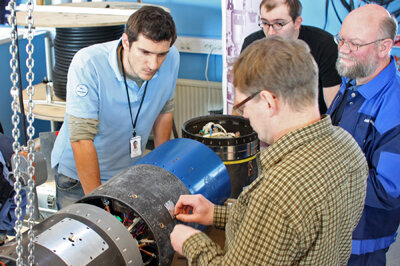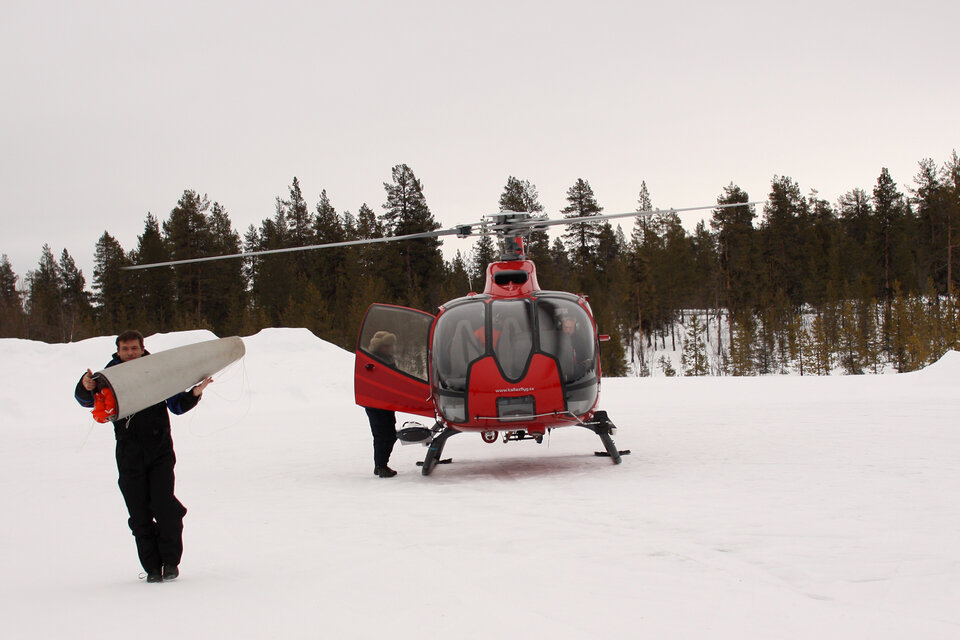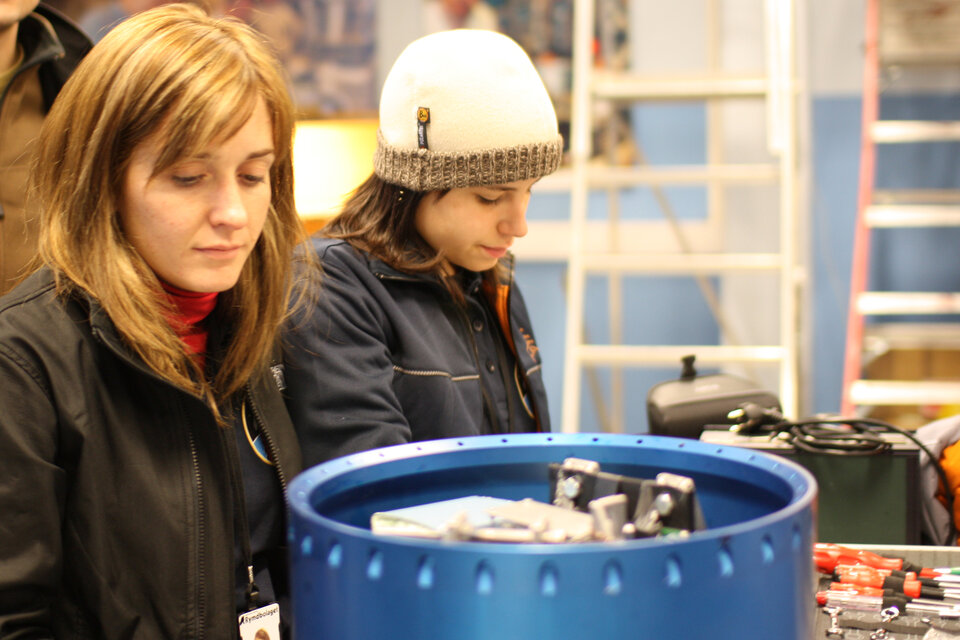Liftoff for latest REXUS flights
Three educational experiments sponsored by ESA’s Education Office blasted off to the edge of space on 12 and 13 March during the latest REXUS sounding rocket campaign from the Esrange Space Centre in Kiruna, Sweden.
First to fly was REXUS 6, which soared to an altitude of 88 km before returning its payload safely to the ground for subsequent recovery and analysis. On board was the ESA-sponsored Nordic Ionospheric Sounding Rocket Seeding Experiment (NISSE), which was developed by a student team from the University of Bergen, Norway, the University of Oulu, Finland, and the Finnish Meteorological Institute.
The experiment was designed to spray 11 kg of water into the ionosphere to study the formation of a cloud of ice crystals and water vapour with the EISCAT radar system. The three EISCAT radars, located in Kiruna (Sweden), Tromsø (Norway) and Sodankylä (Finland) are normally used to study auroras and the properties of the ionosphere. On this occasion, it was hoped that they would be able to detect the signal reflected by the cloud in order to study the ionisation of the water molecules.
REXUS 5 was launched at 07:00 local time on 13 March, reaching an altitude 87.3 km. Its payload included two ESA-sponsored student experiments. Itikka, developed by the Castor Space Club from the Technical University of Tampere, Finland, was intended to test an inertial measurement unit to be used in Supikoira, a future sounding rocket project. It included a camera to capture pictures of the Earth from high altitude.

Unfortunately, although the rocket was clearly detected by the EISCAT radars, a malfunction in the spraying system prevented the water from leaving the nozzles. The student team and ESA experts are examining a failure of the pyro igniters as a possible cause.
The Vibration effects on Biphasic fluids (VIB-BIP) experiment was provided by the Universitat Politecnica de Catalunya, Spain. Its objective was to study the vibrations in fluids containing gas bubbles, known as biphasic fluids, in low gravity.

The Itikka team reported that all of the onboard systems had worked well and initial analysis of the data indicated that some promising results had been obtained. The VIB-BIP team reported a partial success of their experiment with images of the fluid obtained, but unfortunately no vibrations in the fluid during the low gravity phase of the flight. A postflight analysis is ongoing. Reports on the outcome of all three experiments will be presented to ESA in June.

Some 20 students from the three student teams gained valuable hands-on project experience in realising their experiments from end-to-end over a one year period, including design, development, testing, participation in the launch campaign and postflight data analysis.
The next pair of sounding rocket flights with experiments sponsored by ESA's Education Office will take place in March 2010. After a lengthy selection process, three teams, comprising students from Sweden, the UK and Italy, were selected in February 2009 to fly their experiments during the REXUS 7 and 8 campaign.
REXUS is a bilateral German-Swedish cooperation between the German Aerospace Center (DLR) and the Swedish National Space Board (SNSB) that offers students opportunities to fly their own experiments on sounding rockets.
Half of the payload is reserved for German students, while the Swedish half has been made available to students from other European countries through a collaboration with ESA's Education Office.
EuroLaunch, a joint venture of Esrange (Swedish Space Cooperation) and the Mobile Rocket Base MORABA (DLR), is responsible for the campaign management and operations of the sounding rockets.




